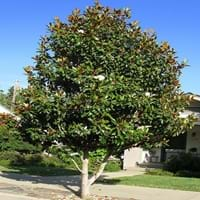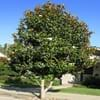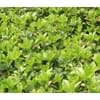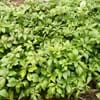Life Span
Perennial
Perennial
Type
Broadleaf Evergreen
Flowering Plants, Fruits, Trees
Origin
Southeastern United States
Central Asia
Types
Not available
Aceymac apple, Bailey Sweet apple, Dabinett apple, Nehou apple
Habitat
marshes, Marshy ground, Swamps
Hillside
USDA Hardiness Zone
6-10
5-8
AHS Heat Zone
Not Available
9-1
Sunset Zone
21,22
A1, A2, A3, 8, 9, 10, 11, 12, 13, 14, 15, 16, 17, 18, 19, 20, 21, 22, 23, 24
Habit
Pyramidal
Oval or Rounded
Flower Color Modifier
Bicolor
Not Available
Fruit Color
Red
Green, Red
Leaf Color in Spring
Dark Green
Dark Green
Leaf Color in Summer
Dark Green
Green
Leaf Color in Fall
Dark Green
Brown, Green, Light Yellow
Leaf Color in Winter
Dark Green
Not Available
Leaf Shape
Pyramidal
Oblong
Plant Season
Spring, Summer, Fall, Winter
Spring
Sunlight
Full Sun, Partial Sun
Full Sun, Partial shade
Type of Soil
Clay, Loam, Sand
Loamy
The pH of Soil
Acidic, Neutral
Neutral
Soil Drainage
Well drained
Well drained
Bloom Time
Early Spring, Spring, Late Spring, Early Summer, Summer, Late Summer
Fall, Summer
Tolerances
Pollution, Drought
Drought
Where to Plant?
Ground, Pot
Ground
How to Plant?
Layering, Semi-ripe cuttings, Softwood cuttings
Grafting, Seedlings, Transplanting
Plant Maintenance
Low
Medium
Watering Requirements
Provide sufficient water to saturate the root zone, Requires regular watering, Water when soil is dry
Medium
In Summer
Less Watering
Lots of watering
In Spring
Drought Tolerant
Moderate
In Winter
Average Water
Average Water
Soil pH
Acidic, Neutral
Neutral
Soil Type
Clay, Loam, Sand
Loamy
Soil Drainage Capacity
Well drained
Well drained
Sun Exposure
Full Sun, Partial Sun
Full Sun, Partial shade
Pruning
Remove damaged leaves, Remove dead branches, Remove dead leaves
Prune when plant is dormant, Remove dead or diseased plant parts
Fertilizers
All-Purpose Liquid Fertilizer
All-Purpose Liquid Fertilizer
Pests and Diseases
Birds, Squirrels
Aphids, Canker, Caterpillars, Powdery mildew, Root rot
Plant Tolerance
Drought
Drought
Flower Petal Number
Single
Single
Foliage Texture
Coarse
Medium
Foliage Sheen
Glossy
Matte
Attracts
Birds, Rabbits, Squirrels
Birds
Allergy
allergic reaction, Asthma, Runny nose
Mouth itching, Throat itching
Aesthetic Uses
Beautification, Cottage Garden, Landscape Designing, Showy Purposes
Not Used For Aesthetic Purpose
Beauty Benefits
Anti-ageing, Beautiful Skin, Blood purifying, Treatment of Dark Spots
Not Available
Environmental Uses
Air purification
Air purification
Medicinal Uses
Alzheimer’s Disease, anti-cancer, Anxiety, Asthma, Diabetes, Liver problems, Menstrual Cramps
Cancer, constipation, Diabetes, Diarrhea, Dysentry, Fever, Heart problems, Tooth ache
Part of Plant Used
Flowers
Fruits
Other Uses
Air freshner, Grown for shade
Used As Food, Wood is used for making furniture
Used As Indoor Plant
Yes
No
Used As Outdoor Plant
Yes
Yes
Garden Design
Container, Feature Plant, Landscape, Shade Trees, Street Trees
Fruit / Fruit Tree, Shade Trees, Showy Tree
Botanical Name
MAGNOLIA grandiflora
Malus domestica
Common Name
Magnolia grandiflora, bull bay
Apple Tree
In Hindi
Magnolia grandiflora
सेब का वृक्ष
In German
Immergrüne Magnolie
Apfelbaum
In French
Magnolia à grandes fleurs
Pommier
In Spanish
Magnolia grandiflora
Manzano
In Greek
Magnolia grandiflora
μηλιά
In Portuguese
Magnólia-branca
Macieira
In Polish
Magnolia wielkokwiatowa
jabłoń
In Latin
Magnolia grandiflora
Arbore
Phylum
Magnoliophyta
Magnoliophyta
Class
Magnoliopsida
Magnoliopsida
Order
Magnoliales
Rosales
Family
Magnoliaceae
Rosaceae
Clade
Angiosperms, Magnoliids
Angiosperms, Eudicots, Rosids
Tribe
Not Available
Not Available
Subfamily
Magnolioideae
Not Available
Number of Species
Not Available
Season and Care of Southern Magnolia and Apple Tree
Season and care of Southern Magnolia and Apple Tree is important to know. While considering everything about Southern Magnolia and Apple Tree Care, growing season is an essential factor. Southern Magnolia season is Spring, Summer, Fall and Winter and Apple Tree season is Spring, Summer, Fall and Winter. The type of soil for Southern Magnolia is Clay, Loam, Sand and for Apple Tree is Loamy while the PH of soil for Southern Magnolia is Acidic, Neutral and for Apple Tree is Neutral.
Southern Magnolia and Apple Tree Physical Information
Southern Magnolia and Apple Tree physical information is very important for comparison. Southern Magnolia height is 610.00 cm and width 300.00 cm whereas Apple Tree height is 25.00 cm and width 20.00 cm. The color specification of Southern Magnolia and Apple Tree are as follows:
Southern Magnolia flower color: White
Southern Magnolia leaf color: Dark Green
Apple Tree flower color: White
- Apple Tree leaf color: Dark Green
Care of Southern Magnolia and Apple Tree
Care of Southern Magnolia and Apple Tree include pruning, fertilizers, watering etc. Southern Magnolia pruning is done Remove damaged leaves, Remove dead branches and Remove dead leaves and Apple Tree pruning is done Prune when plant is dormant and Remove dead or diseased plant parts. In summer Southern Magnolia needs Less Watering and in winter, it needs Average Water. Whereas, in summer Apple Tree needs Lots of watering and in winter, it needs Average Water.





